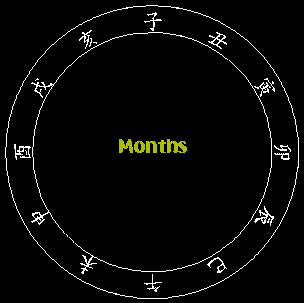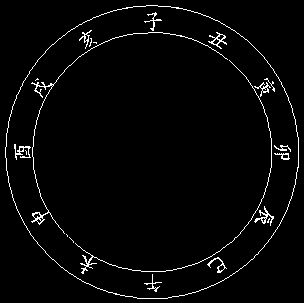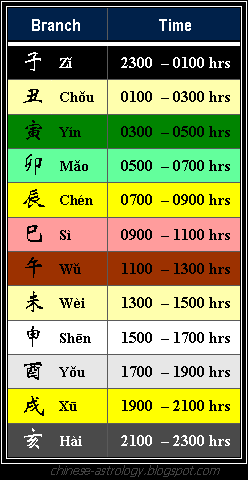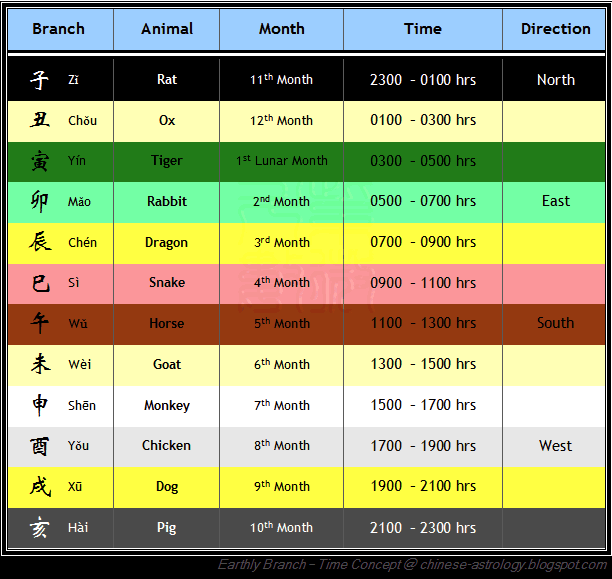Gregorian Calendar or Solar Calendar - 阳历 「Yáng Lì 」
This is the calendar we see on our computer. The dates are arranged in
accordance to the movement of the Earth around the Sun. Each solar year
is 365 days and is divided into 12 months, with 30 or 31 days each, with
the exception of February. Every 4 years, there is a leap year whereby
February gets 29 days instead of 28.
Lunar calendar - 阴历 「Yīn Lì 」
Known as the traditional Chinese Calendar, it is based on the moon's orbit
around the Earth. The new moon day is the 1st day of a lunar month. The length
of a lunar month is the length between two new moon days which is 29 or 30 days.
Lunisolar calendar - 阴阳历 「Yīn Yáng Lì 」
This is a combination of the Lunar and Solar calendars. It indicates both the
moon phase and the time of the solar year and is used to track seasonal changes.
There is a 13th month, or intercalary month 閏月 「Rùn Yuè 」 in every 3 years.

Farmers' Calendar 农历 「Nóng Lì 」
The Farmers' Calendar 农历 「Nóng Lì 」 or originally called 夏历 「Xià Lì 」
(which means Summer Calendar) is a Lunisolar Calendar and is used in 《ZWDS 》.
The calendar divides the year into 24 节气 Jieqi for agriculture (which was the principal
economy of the country). It is not normally used in day-to-day activities, but more for
dating of holidays and Chinese Astrology. It was based on a "19 年 7 闰 法" which means,
in every 19 years, 7 of the years have 13 months (the extra month is 闰月 「Rùn Yuè 」),
and the years which have 13 months are called 闰年 「Rùn Nián 」.
You can read about its early history here.
You can convert your western birthdate to the chinese calendar here.

The first month of the year is called 正月 「Zheng Yue 」.
The rest of the months are simply numbered as second, third, fourth, etc etc.
The numbering of the months varied with different dynasties.
夏 Xia Dynasty sets 寅 「Yin 」 as the 1st month
whereas it was 丑 「Chou 」 during the 商 Shang Dynasty,
子 「Zi 」 during the 周 Zhou Dynasty and
亥 「Hai 」 during the 秦 Qin Dynasty.
It was however reverted back to 寅 「Yin 」 as the 1st month
during the 汉 Han Dynasty and remained so till today.


The Chinese Time Concept
A day has 12 时辰 「 Shí Chén 」 and begins at 2300 hours or 11 pm. Each Shi Chen
is 2 hours and is named after each of the 12 Earthly Branches. The hour of 午 「 Wu 」 is
midday from 11 am to 12 pm, which is why till today, midday is called 中午 in chinese.
Ancients also made use of sundials to track time which were arranged in this manner:

It is not hard to guess the hours each branch corresponds to since the dial looks
pretty much like our modern clocks, except now, we are looking at a 24-hour clock face.


Directional traits are also factored into the interpretion of charts.
亥 「 Hai 」 and 子 「 Zi 」 represent North,
巳 「Si 」 and 午 「Wu 」 are South,
申 「Shen 」 and 酉 「You 」 are West and
寅 「Yin 」 and 卯 「Mao 」 are East.

You will discover the uses of Branch-directions if you tour around in China.
For example, the southern gate of the Imperial Palace in Beijing is called
Wu Men 午門, corresponding to the branch which represented the direction of South.
To summarise,



